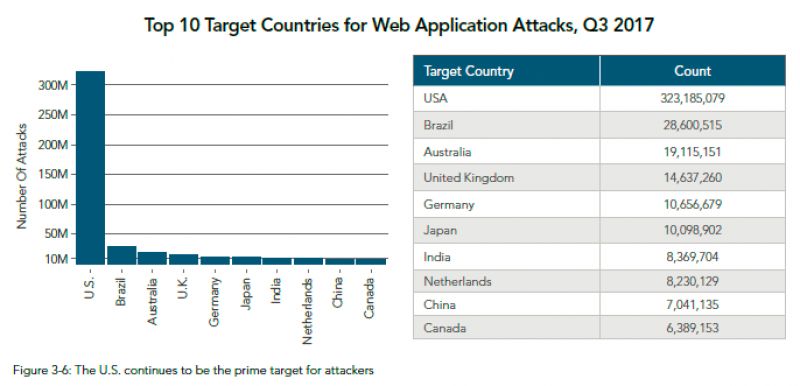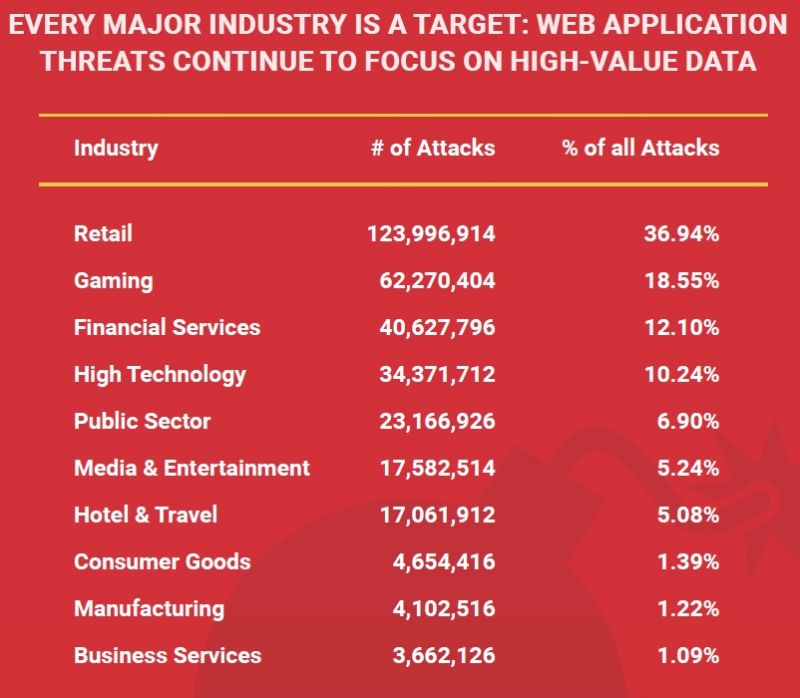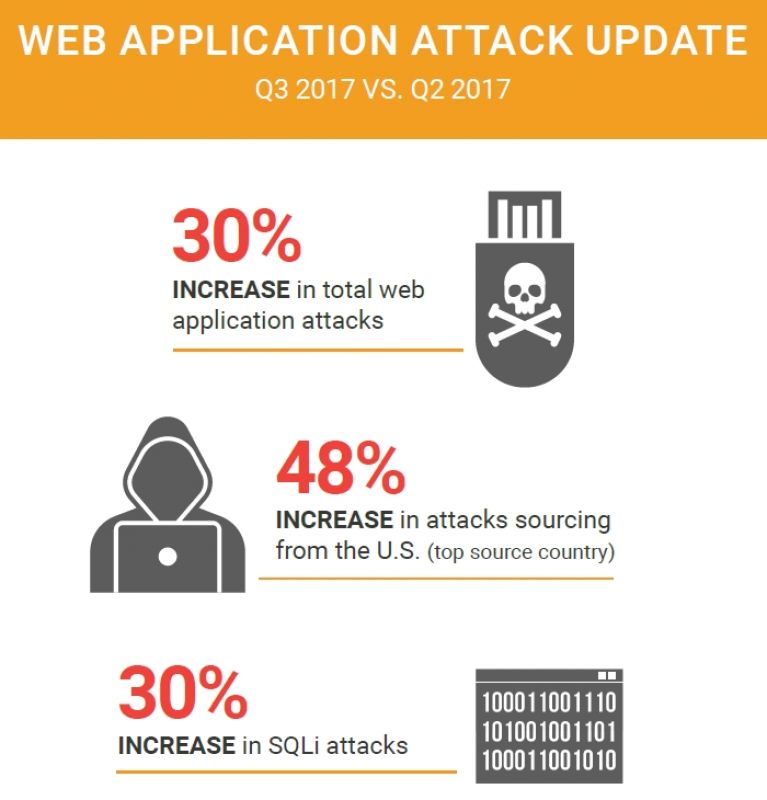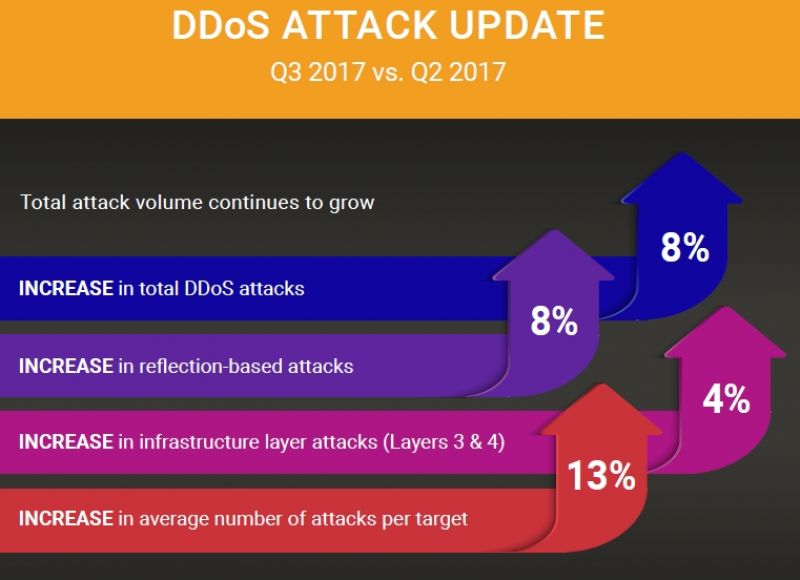Web Application Attacks India ranks 7th
Holiday shopping season may see new attack types leveraging IoT devices, mobile platforms.

Newly released data shows that web application attacks continued to rise significantly in both the quarter-over-quarter and year-over-year timeframes, according to the Third Quarter, 2017 State of the Internet / Security Report released by Akamai Technologies, Inc.. In addition, further evaluation of the Mirai botnet and WireX malware attacks suggests that attackers may leverage IoT and Android devices to build future botnet armies.
The report found that the number of web application attacks last quarter (Q3 2017) increased 69 per cent in total from the same timeframe last year (Q3 2016). In the last quarter alone, web application attacks rose 30 per cent as compared to the second quarter of 2017. Over the last year, a 217 per cent increase in attacks sourcing from the US was seen, with an increase of 48 per cent in the last quarter as compared to the prior one.
SQL injection (SQLi) attacks continued to be heavily utilised by attackers as a part of the significant rise of web application attacks. This attack vector increased 62 per cent since last year, and 19 per cent since last quarter. The significant increase in web application attacks, particularly "injection" attacks like SQLi, should come as no surprise as the latest version of the OWASP Top 10 2017 that came out last week has "injection" (inclusive of SQLi) as the top ranked vulnerability category. This new iteration is the first major update to the OWASP Top 10 since 2013, when "injection" also resided in the top spot.
Perhaps more alarming was the result of taking a closer look at the Mirai botnet and encountering the introduction of WireX malware. While smaller than its predecessor, the Mirai malware strain, which uses Internet of Things (IoT) devices, was responsible for the largest attack seen in Q3 at 109 Gbps. The ongoing Mirai activity, coupled with the introduction of WireX, which commandeers Android devices, highlights the vast potential that exists for new sources of botnet armies.
"The lure of easy access to poorly-secured end nodes and easily-available source code make it likely that Mirai-based attacks won’t be fading in the near future," said Martin McKeay, senior security advocate and senior editor, State of the Internet / Security Report. "Our experience suggests that an army of new potential attackers comes online every day. Couple with that, the ubiquity of Android software and the growth in the Internet of Things are amplifying the risk/reward challenges that enterprises face to tremendous levels."
Other highlights from Akamai report include:
• The use of Fast Flux DNS by botnets is examined, demonstrating why the use of rapidly changing DNS information helps attackers by making it harder to track and disrupt botnets and malware.
• The number of DDoS attacks in Q3 increased by 8 per cent quarter over quarter, highlighted by a 13 per cent increase in the average number of attacks per target (36).
• Germany, despite not being among the top five source countries for DDoS attack traffic in the previous quarter, had the largest number of attack traffic source IPs in Q3 – 58,746 – 22 per cent of the global total.
• Egypt, last quarter’s leader for DDoS attack traffic (44,198) fell out of the top 5 in Q3.
• Australia suffered the third most web application attacks (19,115,151) despite not even registering in the top 10 in Q2.
With the holiday shopping season upon us, Akamai expects that both the monetary and emotional aspects of attack dynamics will strongly influence behavior in the fourth quarter. Criminals are likely to leverage the fact that the final quarter of the year is critical for merchants, making the merchants much more likely to pay an extortion letter threatening an attack on Black Friday or Cyber Monday than at many other times of year.
"As noted in the Attack Spotlight, the code base from Mirai is still being used and is evolving," added McKeay. "In addition, criminals are getting better at hiding their command and control structures, using techniques like Fast Flux DNS. It would not be surprising if, during this holiday season, we see new attacks such as those based on IoT devices or mobile platforms."





